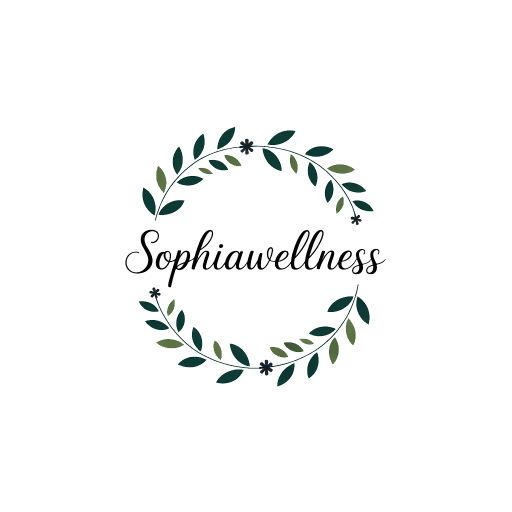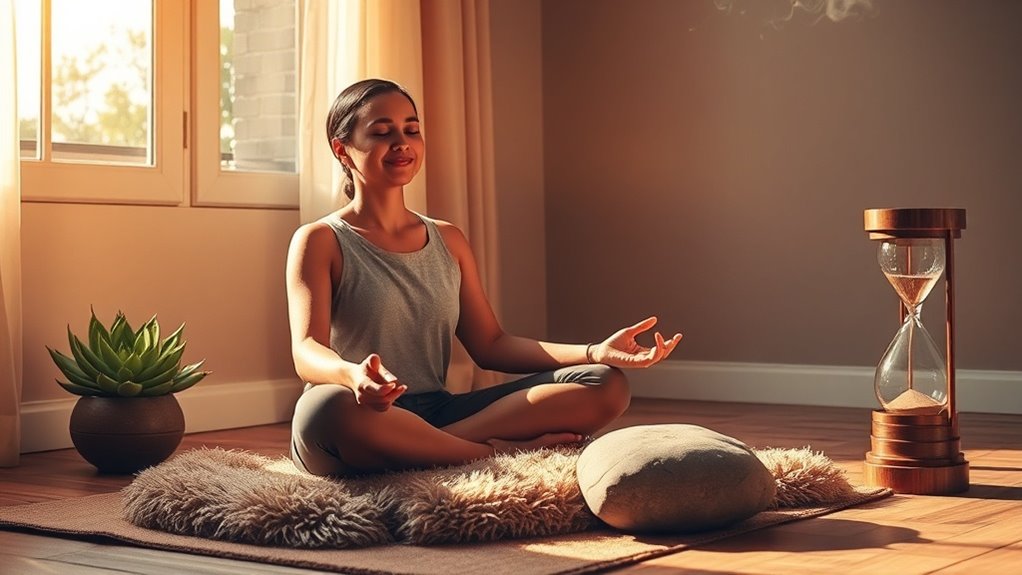These Two Breathing Exercises Instantly Calm My Anxiety
Imagine standing on the edge of a stormy sea, waves of anxiety crashing around you. In moments like these, finding calm can feel impossible. But what if you had the tools to navigate those turbulent waters? Breathing exercises can provide that anchor, helping you regain control and clarity. Let’s explore two effective techniques that can bring you immediate relief and restore a sense of peace in your life.
Key Takeaways
- Diaphragmatic breathing helps engage the diaphragm, promoting deeper breaths that reduce anxiety and activate the body’s relaxation response.
- The 4-7-8 technique encourages rhythmic breathing, which calms the nervous system and fosters immediate relaxation.
- Both techniques effectively lower cortisol levels, aiding in stress reduction and improving overall mood.
- Regular practice of these exercises enhances focus and emotional balance during anxious moments.
- Implementing breathing exercises into your routine can significantly improve sleep quality and daily peace.
Understanding Anxiety and Its Effects
Have you ever felt a rush of panic that seems to come out of nowhere? It’s unsettling, isn’t it?
Anxiety can sneak up on you, triggering a fight-or-flight response that leaves you feeling overwhelmed and out of control.
You might notice physical symptoms like a racing heart or shallow breathing, making it hard to focus.
Understanding these effects is crucial; they’re your mind and body reacting to stress. That’s where breathing exercises come into play, as they can help you breathe easy and regain your sense of calm.
The Benefits of Breathing Exercises
Breathing exercises offer a powerful tool for managing anxiety and promoting relaxation.
When you practice these techniques, you’ll experience several benefits:
- Reduced Stress: Engaging in focused breathing lowers cortisol levels, helping you feel calmer.
- Improved Focus: Deep, intentional breaths enhance your concentration and mental clarity.
- Enhanced Mood: Breathing deeply triggers the release of endorphins, boosting your overall mood.
- Better Sleep: Regular practice can improve your sleep quality, making it easier to unwind.
Incorporating breathing exercises into your daily routine can transform how you handle anxiety, fostering a sense of peace and balance in your life. Additionally, these exercises can be linked to meditation techniques that further enhance relaxation and clarity.
Exercise One: Diaphragmatic Breathing
One effective technique for managing anxiety is diaphragmatic breathing, which helps you tap into the body’s natural relaxation response.
This exercise encourages deeper breaths, allowing your diaphragm to engage fully, which can calm your mind and body.
When you practice diaphragmatic breathing, you shift your focus away from stressors and into the present moment.
It’s a gentle reminder that you can regain control over your breath and, ultimately, your anxiety. This technique can quickly help calm your mind, promoting relaxation and enhancing your overall meditation practice.
Step-by-Step Guide for Diaphragmatic Breathing
Diaphragmatic breathing can be a powerful tool for managing anxiety, helping you feel more centered and in control. Let’s walk through a simple step-by-step technique that makes it easy to incorporate this practice into your routine. Deep breathing techniques, especially diaphragmatic breathing, have been shown to activate the body’s relaxation response, reducing stress levels effectively.
Benefits of Diaphragmatic Breathing
When anxiety starts to creep in, you might find that focusing on your breath can offer a powerful sense of relief.
Diaphragmatic breathing brings several benefits:
- Reduces stress: It activates your body’s relaxation response.
- Enhances focus: You shift your attention away from anxious thoughts.
- Improves oxygen flow: Better oxygenation supports overall well-being.
- Promotes emotional balance: It helps regulate your emotions and responses.
Step-by-Step Technique Guide
Focusing on your breath can be a transformative practice, especially during anxious moments.
Start by finding a comfortable position, either sitting or lying down. Place one hand on your chest and the other on your belly.
Take a slow, deep breath in through your nose, allowing your diaphragm to expand, not your chest. Hold for a moment, then exhale gently through your mouth.
Repeat this process for five to ten minutes, letting your thoughts drift away.
With each breath, visualize tension leaving your body.
Embrace this calming rhythm, and you’ll find peace amidst the chaos of anxiety.
Exercise Two: 4-7-8 Breathing Technique
One effective method to help ease anxiety is the 4-7-8 breathing technique, which combines controlled breathing with a simple rhythm to promote relaxation. This technique can be a powerful tool in your anxiety toolkit. Here’s how it works:
- Inhale quietly through your nose for a count of 4.
- Hold your breath for a count of 7.
- Exhale completely through your mouth for a count of 8.
- Repeat this cycle three more times.
Incorporating breathing techniques into your daily routine can significantly enhance your overall well-being.
Step-by-Step Guide for 4-7-8 Breathing Technique
The 4-7-8 breathing technique can be a powerful tool to ease anxiety and promote relaxation. By following this simple step-by-step guide, you can experience its calming benefits firsthand. Additionally, practicing this technique regularly can enhance your overall meditation practices and contribute to mental calmness in your daily life. Let’s explore how to practice this technique effectively and make it a part of your routine.
Benefits of 4-7-8
Discovering the 4-7-8 breathing technique can be a transformative experience for those grappling with anxiety.
This simple method offers several benefits that can enhance your well-being:
- Reduces stress: The rhythmic breathing decreases cortisol levels, calming your mind.
- Improves focus: It encourages mindfulness, sharpening your attention on the present moment.
- Promotes relaxation: Deep breaths activate your parasympathetic nervous system, easing tension.
- Enhances sleep quality: Practicing before bed can help you unwind, leading to a more restful night.
Incorporating 4-7-8 breathing into your routine can significantly impact your anxiety management and overall mental health.
How to Practice
Are you ready to embrace a calming practice that can help ease your anxiety?
Start by finding a comfortable seated position.
Close your eyes and take a deep breath in through your nose for a count of four. Hold that breath for seven counts. Now, exhale slowly through your mouth for eight counts, letting all tension release.
Repeat this cycle three to four times.
Focus on the rhythm of your breath, allowing each exhale to calm your mind.
With practice, you’ll find this technique becomes a powerful tool for managing anxiety in your daily life. Give it a try!





